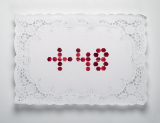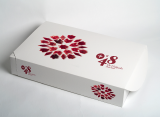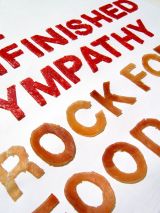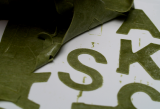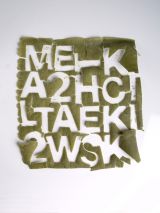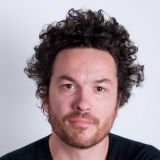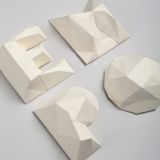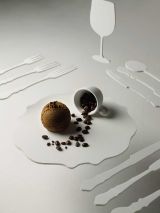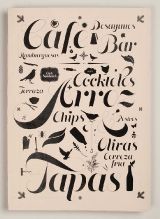Design Per 2010
- EVENTO
- TEMA
- PROGRAMMA
- WORKSHOP
- INCONTRI
- MOSTRE
- AIAP LIBRERIA
- LAB
- ACCADE IN CITTÀ
- INFORMAZIONI
- GRAZIE A
- ARCHIVIO
Borja Martinez. Packaging
Workshop con Borja Martinez e Gerard Mirò / LoSiento
(Spagna)
a
cura di Matteo Carboni
da mercoldì 6 a venerdì 8 ottobre 2010
tutor Simonetta Scala
collaboratori Leonardo Farina, Sonia Formica, Daniela Guccini, Lara Zibret (studenti di Fotografia dell'Accademia di Belle Arti di Bologna)
partecipanti Sauro Antimi, Fabio Bernardi, Camilla Bertelli, Giulia Cignacco, Mirko Cottone, Alexandra Dossi, Sabina Era, Enrico Fabi, Katia Fogli, Luigi Frettoloso, Stefania Fucci, Celestina Ielmoni, Alexandros Korossoglou, Marzia Ligas, Linda Marchetti, Simona Patrono, Carolina Pelosato, Isabel Pugliese, Lia Roncaglia, Devid Sita, Agnese Tamburrini, Beniamino Verdirosi, Paola Zacchello, Laura Zavalloni.
Accademia di Belle Arti, Aula L3, Via Belle Arti 54
Condizioni
-
il workshop è in spagnolo ma prevede la traduzione in italiano,
-
sarà
presente un tutor a disposizione degli iscritti,
- 25 è il
numero max di partecipanti.
Orari
mercoledì 6, ore 10.00 /
13.00 //// 14.00 / 17.30 workshop
giovedì 7, ore 10.00 / 13.00 ////
14.00 / 17.30 workshop
venerdì 8, ore 10.00 / 13.00 //// 14.00 / 17.30
workshop
>>> iscriviti
ora <<<
>>>
Kindergarten riservato a Design Per <<<
Borja Martínez. LoSiento
Dopo gli studi in Industrial Design alla Escola de Disseny Elisava (Barcelona), Borja Martínez decide di trasferirsi a Londra nel 1999 per studiare Graphic Design al London College of Printing (oggi London College of Communication). Vi studia per quattro anni e lavora come designer al Visioncorp studio di Londra, ma ritorna a Barcellona nel 2004 per lavorare nello studio Gráfica e l'anno successivo nello studio Basedesign.
Nel 2005, fonda LoSiento, il suo studio nel quale inizia a sviluppare progetti di graphic design e art direction, per una serie di committenti tra i quali: Sandro Desii (produttore artigianale italiano di pasta e gelati), The Pinker Tones (electronic band), Txoco (gastronomia), Roca (accessori sanitari), El Bulli (gastronomia), Macaco (musicista) ed Easyled (azienda di illuminazione). Nel 2010, LoSiento riceve il Grand Laus award, prestigioso riconoscimento internazionale dal FAD (Fomento de las Artes Decorativas). Oggi, LoSiento comprende un team di 5 designer che lavorano a tempo pieno per la realizzazione di progetti nel campo della corporate identity, del packaging, della grafica editoriale, così come di progetti autogestiti e autoprodotti.
La loro filosofia è basata sul sostituire e ripensare l'intera identità dei progetti. La principale caratteristica dello studio LoSiento è un organico e quasi fisico approccio alle soluzioni, il risultato di un modo di progettare nel quale il graphic e l'industrial design dialogano costantemente, in un continuo tentativo di stabilire una relazione con i processi artigianali.
Borja Martinez. LoSiento
After starting his career in Industrial Design in Escola de Disseny Elisava (Barcelona), Borja Martínez decided to move to London in 1999 to study Graphic Design in the London College of Printing (today, London College of Communication).
After his four years combining his studies with his job as a designer at Visioncorp studio, Borja returns to Barcelona in 2004 to work for a year as full time designer in Gráfica and a year later starts working part time at Basedesign.
In 2005, he founds on his own the studio LoSiento, from where he starts developing different kind of graphic design and art direction projects, for clients such as Sandro Desii (Italian artisan pasta and ice cream), The Pinker Tones (electronic band), Txoco (gastronomy), Roca (bathroom fittings), El Bulli (gastronomy), Macaco (musician) or Easyled (lighting company). In 2010, LoSiento is granted by the FAD (Fomento de las Artes Decorativas) with the Grand Laus award. Now days, LoSiento gathers a team of 5 professionals and continues working for projects in the fields of corporate identity, packaging, editorial, and in self-initiated projects as well. Our philosophy is based on taking over the whole concept of the identity projects.
LoSiento's main feature is an organic and physical approach to the solutions, resulting in a field where graphic and industrial design dialogue, in a constant search for an alliance with the artisan processes.
1. What led to the formation of your studio?
To have absolute freedom and control to the projects I do for different kind of clients. Also the idea to get more time for selfinitiated projects.
2. How many staff people does your studio have and what are their main working fields?
We are five people in total: three junior designers, a project manager and myself as an art director-designer.
3. How does a regular working day at your studio look like, how is the day structured?
Morning: General planning of the projects we are working on.
I used to carry on with this projects updating all the information and doing the presentations for the clients. Also we deal with printers and production stuff.
Afternoon: The studio is usually more quiet then, and all of us concentrate on developing the projects we started in the morning.
4. How much leisure time do you have during a year?
Not too much. LoSiento works many weekends to update projects.
We are small but with a “worker activity”
5. Which business areas do your clients mainly come from?
Mostly: Music, food, fashion, art...
Is the number of your clients increasing or rather declining?
They are Increasing.
6. Do you have a specific corporate philosophy or maybe a mission statement like other companies, which is reflected in the way you steer the studio’'D5s course?
- To have fun
- Keep it simple, but with a strong message.
- My goal: see my clients laugthing after a project presentation
- Work in craftmanship way / warm / sensitive / simple / dynamic / clear
7. What, from your point of view, makes the difference between a small studio and a big company?
Budgets?
Better budget, better projects? Maybe...
I think better budgets gives you the possibility of making more sophisticated results, more special colaborations with good illustrators, photographers, printers... You have the access to make big projects because the budget. Big clients are looking for big companies to get big results - Not small ones-. They just want to get in contact with small studios when the budget is low.
Small studio have less pressure at his point, with a little structure, small studios have to think different ways to transform a small budget in a big quality project!!!
One important thing for me is that normally there is no time to do personal stuff in a big company, time to practice, to experiment process in constructing new ideas... Normally, everything is running very fast. Everything is for tomorrow. Rush! Rush!
8. What kind of advantages and disadvantages does a small studio have compared to a big company?
To get big clients, big projects, institutional projects... Big structure, big spaces, big everything!!!
9. What is your idea about the future of small studios?
Do you think that small studios do not have any other choice but to expand in order to survive in these times of globalization?
I think we will grow up, we will survive making connections with good collaborators like Photographers, illustrators, printers, web programators.... and other Small studios. Nowadays new technologies make this happens frequently.
10. Please describe and elaborate on the goals or plans that you have for your studio for the next five years?
I woult like to keep doing the same work but re-inforcing the results of quality, ideas, collaborations, and clients satisfaction. And the main thing: TO HAVE FUN.
